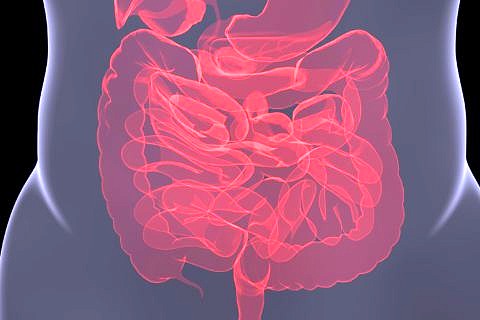Invisible inflammation in intestinal lining may explain food intolerance
Team of researchers at Erlangen investigating new diagnostic methods to show whether patients have a food intolerance
Nowadays, significantly more people suffer from food intolerance than was the case in the past. The diagnostic method of choice when testing for food allergies, a special form of food intolerance, remains the skin prick test combined with chemical tests in the lab to detect specific antibodies in the blood. Breath tests are used to check for intolerance of certain types of carbohydrates, and a simple change in diet can go a long way towards easing symptoms. However, a number of patients with food intolerances display a complex range of symptoms which are predominantly gastrointestinal in nature, but may also include other more general complaints which have a negative impact on their quality of life. Often, the diagnostic methods outlined above do not bring any conclusive results for these patients. Endoscopic tests also often indicate that there is nothing obviously wrong with the intestinal lining. These patients tend to have already suffered over a long period of time, and have imposed strict diets on themselves, leaving them with a very restricted choice of foodstuffs which can over time lead to malnutrition and physical weakness.
In an effort to gain a better understanding of cases such as these, a working group led by Prof. Dr. Yurdagül Zopf at the Department of Medicine 1– Gastroenterology, Pneumology and Endocrinology (Director: Prof. Dr. Markus F. Neurath) at Universitätsklinikum Erlangen investigated samples of intestinal tissue from patients suffering from food intolerance. The researchers compared samples from those patients who had been proven to have food allergies and those from samples of intestinal tissue taken from patients with food intolerance of unknown origin.
Inflammation indicates food intolerance
The researchers succeeded in demonstrating that, compared to other methods, a differentiated analysis of the intestinal tissue is the most sensitive and reliable method for proving a suspected food intolerance. Tissue-associated immunoglobin E (IgE), i.e. special antibodies belonging to the body’s immune system, and high levels of tumour necrosis factor α (TNF-α), a signalling substance of the immune system involved in the inflammation processes, are directly associated to food allergies. Patients with a food intolerance of unknown origin, however, only have a very low level of tissue-associated IgE and TNF-α, but high levels of interferon-f. This is a protein which is formed where there is inflammation.
‘This indicates that there is a slight inflammation in the intestinal lining,’ explains nutritional expert Prof. Zopf. ‘For the first time, we have been able to prove that a food intolerance of unknown origin is based on an inflammatory reaction in the intestinal lining,’ she continues. ‘If nothing abnormal is detected after carrying out an endoscopy of the intestines, the samples of intestinal tissue should be investigated in more detail to clarify if there is an evidence of an inflammation which would prove a food intolerance.’
This special test is conducted as part of studies in the Hector Centre for Nutrition, Exercise and Sport in Department of Medicine 1– Gastroenterology, Pneumology and Endocrinology at Universitätsklinikum Erlangen. The researchers in Erlangen led by Prof. Zopf suspect that changes in the intestinal flora may be involved in triggering the inflammation in the intestinal lining. Further studies are planned to investigate the influence of the intestinal microbiome and continue work on characterising the inflammation in the intestinal lining.
- Link to study: https://pubmed.ncbi.nlm.nih.gov/33600102
Further information:
Prof. Dr. Yurdagül Zopf
Phone: +49 9131 85-45220
med1-hector-center@uk-erlangen.de
